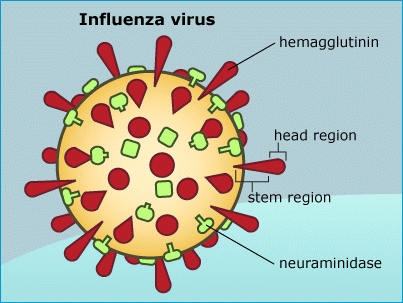Influenza, what a joy! I think by this point we know that flu is caused by a virus that has an infinite mutation potential that makes vaccines very fleetingly efficient (taken on a yearly basis). But! Who is influenza and what does it do?
Influenza is a virus part of the mind-blowingly named Orthomixovirus family, and is transmitted between hosts via droplets carried by sneezing or coughing. It presents symptoms between 2 and 10 days post-infection, such as fever, cough and nasal congestion. Unlike the rhinoviruses that cause the common cold, influenza actually damages tissue. However, the symptoms are mostly the result of the body’s own immune response caused by a release of proinflammatory cytokines from infected cells.

The mechanism of infection of influenza consists of its outer hemagglutinin protein being cleaved by proteases present in human cells. These are found in the throat and lungs, so other tissues don’t get infected as a result. More virulent strains like the bird flu strain H5N1 on the other hand, can have their hemagglutinin cleaved by other types of proteases, hence enable their spread to other parts of the body.
Vaccination is helpful for limiting the spread of potential flu outbreaks, but especially moreso for people who are susceptible to complications such as the very young and very old, those with…
